Happy National Bison Day! The American bison is most definitely one of North America's most iconic and recognizable mammals. This species has played such a significant role in our continents history, and their majestic presence never fails to captivate wildlife lovers and travelers from all around the world!
There is so much to know about bison, but we know you're busy, so today we will be highlighting 5 interesting facts about these creatures. Pop on your virtual binoculars and let's get learning!
1. Bison Have Incredibly Thick Coats
Did you know that Yellowstone National Park is the only location in the lower 48 states of the USA that has had a population of free-range bison since prehistoric times? This fact drives home how resilient this species is - especially given the brutal climate of Yellowstone National Park. You may be wondering, how do they stand tall through such frigid temperatures? It's all due to their genetic makeup!
Most mammals stay warm by burning excess calories, however, bison rely on their unique, thick coat to keep the cold at bay. Bison have two layers to their coat: a coarse outer layer that shields them from the chill and moisture, and a fine inner layer that provides an insulating effect by trapping in warmth.
If you come across a bison with snow still resting on its back, don't fret; it's a sign that the insulating properties of their thick coat is doing an excellent job in keeping them warm!

Yellowstone National Park // Flickr
2. The American Bison Once Neared Extinction
At the beginning of the 19th century bison populations were thriving with somewhere around 30 to 60 million wandering the great plains of North America. That being said, due to the being relentlessly overhunted, this species was pushed to the brink of extinction by the end of the 19th century. By 1886, a scientific survey reported that there were fewer than 100 wild bison left in the United States!
Realizing that if nothing changed this species would soon not exist, a combination of public and private conservation programs banded together to promote the recovery of the bison population. Three significant efforts that played a crucial role in this recovery included the American Bison Society, the National Bison Range of Montana, and the InterTribal Buffalo Cooperative!
Today, the bison population has risen to approximately 400,000 to 500,000, spread across both conservation and commercially managed herds. Nearly 6,000 free-roaming bison can be found in Yellowstone National Park!

Marc Pierce American Bison Sculpture by Demdaco
3. Bison are the Largest Mammal in North America
It might come as no surprise to you that bison are the largest mammals in North America. What may truly amaze you, though, is just how massive they can actually be!
A mature male bison can be around 5.5 to 6.5 feet tall at the hump and about 9 to 12.5 feet long. Females are typically smaller, measuring 7 to 10 feet in length and standing around 5 feet tall at the hump. They can weigh anywhere from 1,800 to 2,400 pounds! Even the calves are large, weighing up to 70 lbs. at birth.

Bison Sculpture, Bison Mug, Bison Stuffed Animal, Bison Knife, Bison Hat
4. American Bison Play a Vital Role in the Yellowstone National Park Ecosystem
To gain a deeper understanding of how bison impact the ecosystem of Yellowstone National Park, the park's biologists have recently completed a decade-long research project in which they closely monitored bison behavior across various seasons.
This study revealed the positive impact of bison on the ecosystem. Bison grazing not only maintains nutrient-rich, uncompacted soils but also enhances nutrient recycling and preserves soil moisture. A more nutrient-rich soil leads to increased plant growth and productivity. This surplus of plant life has helped support not only bison but also other herbivores, creating a healthy predator-prey dynamic, ultimately benefiting the entire Yellowstone ecosystem. How cool!

Yellowstone National Park // Flickr
5. Bison are Historically Integral to Native American Culture
Native American communities deeply depended on bison as a vital resource and for their overall quality of life. They were known for making use of every aspect of the bison, incorporating it into their diets, crafting clothing, building shelters, building tools, and even including it into their cultural ceremonies and celebrations.
The Native American tribes' reliance on bison was a tradition lasting thousands of years, as these animals provided them with essential resources and held cultural significance. The near extinction of bison during the 19th century significantly contributed to the devastating impact on Indigenous communities, disrupting their traditional practices and way of life.

Bison Large Pocket Clipback Knife by Buffalo Knives
****
Written by: Alexa Jorgenson, MGC Content Creator
Photography by: Yellowstone NPS & Luke Clark, MGC Photographer
Blog Cover by: Averi Thompson, MGC Graphic Designer


Leave a comment